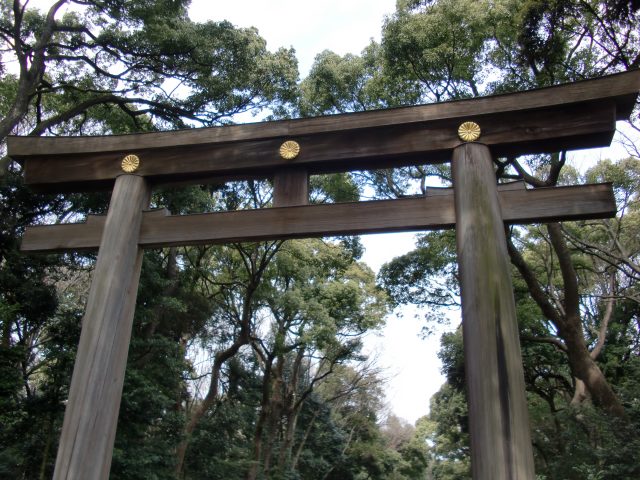
One of my favorite places to visit in Tokyo on my first visit to Japan as a college student was the Meiji Shrine (Meiji-jingu). Located in the heart of noisy, bustling and busy Tokyo, Meiji-jingu was an oasis of quiet and calm. It seemed almost incredulous to me at the time that such a beautiful, peaceful place could exist inside of Tokyo.
There’s an almost instantaneous hush when you enter the shrine grounds. After passing under the giant torii gate at the entrance, you follow a long, wide, shaded path to reach the main shrine complex, passing a large display of sake casks. Sake is closely associated with the Shinto religion and used in rituals and festivals, and the (empty) casks on display indicate the breweries from around Japan who have made donations of sake to the Meiji Shrine.





The shrine is located on 170 acres in the Shibuya District of Tokyo, just a short walk from Harajuku Station on the Yamanote Line. The location for the shrine was a site of an iris garden that Emperor Meiji (1867-1912) and his wife often visited. Emperor Meiji died in 1912, and building of the shrine began in 1915 as a national project, with completion and dedication in 1920 (the Emperor’s and Empress’s graves are not at the shrine; they are buried south of Kyoto). The shrine was completely destroyed during the fire bombings of World War II, but was rebuilt in 1958, again using Japanese cypress and copper.
Meiji-jingu is a popular site for traditional Japanese wedding ceremonies. The day the girls and I visited Meiji-jingu last year just happened to be a national holiday, and we were able to observe six ceremonies in different stages, from the bride being dressed to the wedding procession to the formal photographs at the end.



After visiting Meiji-jingu, we headed back to Harajuku Station and crossed over to Takeshita Dori, the main shopping street in Harajuku. Harajuku has been called the “most fashion conscious place on the planet.” The area around Harajuku station is the place to be on Sunday afternoons if you want to check out the latest looks and fantastic cosplay outfits. Takeshita Dori is also the place to try crepes – there are several shops along the street, and they offer a huge variety of flavors and fillings. The girls and I saw a few fashion plates while we were there, but since it was a holiday the crowd was mostly families and teens out for a day of shopping.




Meiji-jingu still remains the quiet, unhurried place it was when I first visited 45 years ago. It provides a beautiful, peaceful contrast to Tokyo’s (and Harajuku’s) busy pace, and is definitely worth a visit if you’re in Tokyo.